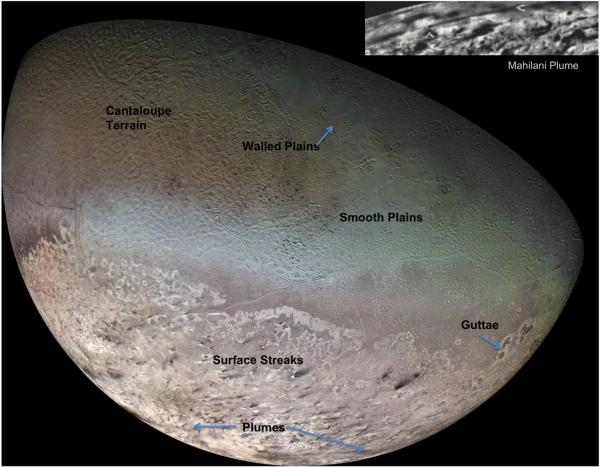Neptune’s largest moon Triton is an interesting target for future exploration, PSI Senior Scientist Candice Hansen says in a new paper in The Planetary Science Journal.
Triton, explored by just one spacecraft, NASA’s Voyager 2, in 1989, is a candidate to be an ocean world based on its geologically young surface and inferred ongoing geological activity with topography possibly shaped by cryovolcanism, the likelihood for having a hydrosphere differentiated from a rocky mantle, and theoretical models that predict a long-lived ocean sustained by tidal heating, Hansen says in “Triton: Fascinating Moon, Likely Ocean World, Compelling Destination!”
In recent years the planetary science community has come to appreciate the importance of exploring ocean worlds — moons with subsurface liquid water. This paper applies that new perspective and assesses what we do and do not know about Triton in the context of answering the question “Is Triton an ocean world?” Further, as we explore ocean worlds, we ask “Do the oceans provide habitable environments and host life?”


